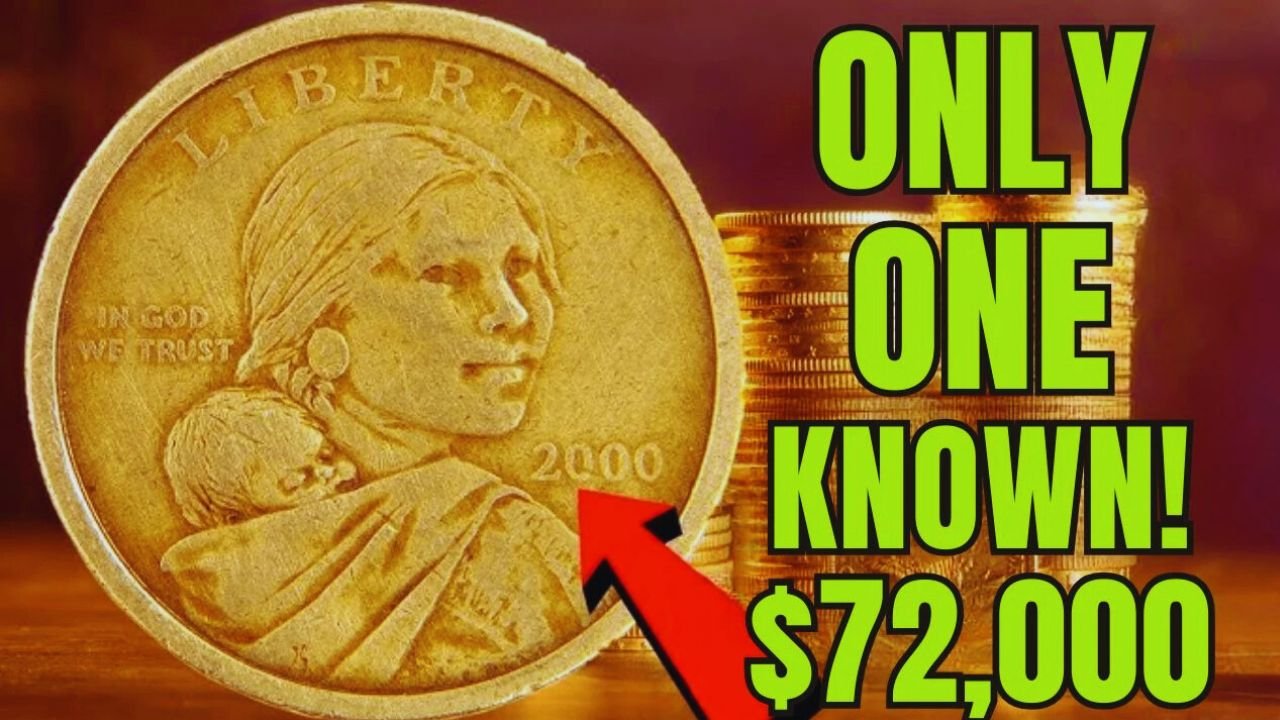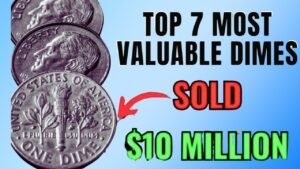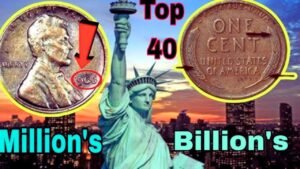Imagine finding a coin in your pocket worth more than a luxury car! The 2000-P Sacagawea Dollar mule error is a numismatic treasure that can fetch up to $200,000 at auction.
This rare coin, with mismatched designs from a Washington quarter and a Sacagawea dollar, is one of the most sought-after modern U.S. coin errors.
With only about 20 known examples, it could be hiding in your change, coin jar, or old collection. Ready to hunt for this golden gem? Here’s everything you need to know to identify it and cash in.
What Is the 2000-P Sacagawea Dollar Mule Error?
A Historic Minting Mistake
A mule error occurs when a coin is struck with dies meant for different denominations. The 2000-P Sacagawea Dollar mule features the obverse of a Washington quarter (George Washington) and the reverse of a Sacagawea dollar (soaring eagle), struck on a golden dollar planchet. This error happened at the Philadelphia Mint in 2000, likely due to a mix-up with similar-sized dies.
Why It’s So Valuable
First discovered by Frank Wallis in Arkansas in May 2000, this mule is the first known U.S. coin error of its kind to enter circulation.
With fewer than two dozen confirmed examples, its rarity drives its value. Auction records show sales as high as $194,062.50 in 2024, with top-grade coins potentially worth over $200,000.
How to Identify the 2000-P Sacagawea Mule Error
Key Features to Look For
To spot this rare coin, check these details:
- Obverse: George Washington’s profile, with “LIBERTY” and “IN GOD WE TRUST,” instead of Sacagawea.
- Mint Mark: A small “P” near Washington’s neck, indicating Philadelphia Mint.
- Reverse: Soaring eagle with “UNITED STATES OF AMERICA” and “ONE DOLLAR.”
- Material: Golden manganese-brass clad, weighing 8.1 grams, 26.5 mm in diameter.
- Edge: Plain, no reeding like a quarter.
Inspection Tips
Use a magnifying glass to examine details. Look for a double rim on the quarter side due to the smaller die size. Avoid cleaning the coin, as it can reduce its value. Compare it to regular Sacagawea dollars and quarters for clarity.
Table: 2000-P Sacagawea Mule Error Specs
| Feature | Details |
|---|---|
| Year | 2000 (undated, attributed to 2000) |
| Mint Mark | P (Philadelphia) |
| Obverse | Washington Quarter (George Washington) |
| Reverse | Sacagawea Dollar (Soaring Eagle) |
| Material | Manganese-brass clad, 8.1 grams |
| Diameter | 26.5 mm |
| Estimated Value | $50,000–$200,000+ |
Why Is the Mule Error So Rare?
A Minting Mishap
The error occurred when a Washington quarter obverse die was mistakenly used in a press meant for Sacagawea dollars.
The U.S. Mint estimated up to 350,000 mules were struck, but most were destroyed after discovery. Only about 20 escaped into circulation, making them incredibly scarce.
Three Die Pairs
Experts have identified three distinct die pairs among the known mules:
- Die Pair 1: Die crack in the “F” of “OF” on the reverse.
- Die Pair 2: Three die cracks on the reverse, near the stars and eagle’s wing.
- Die Pair 3: Fresh obverse with a small die gouge near Washington’s lips.
Where to Find the 2000-P Sacagawea Mule
Everyday Hiding Spots
These coins have been found in:
- Bank Rolls: Uncirculated rolls from 2000 may contain mules.
- Change: Some appeared in vending machines or cash transactions.
- Old Collections: Check family heirlooms or forgotten coin jars.
- Coin Shows: Dealers may unknowingly have mules in mixed lots.
Real-Life Finds
Frank Wallis found the first mule in a 25-coin roll from a bank. Others surfaced in places like a Philadelphia convenience store and a Missouri cafeteria. The thrill of finding one keeps collectors searching.
What to Do If You Find a Mule Error
Handle with Care
If you suspect you have a mule, avoid touching it directly. Store it in a soft cloth or plastic holder to prevent scratches. Cleaning can ruin its value, so keep it as-is.
Get It Authenticated
Contact a reputable grading service like PCGS or NGC for certification. Fakes and novelty coins exist, so professional verification is crucial. A certified mule can fetch top dollar at auction.
Selling Options
- Auction Houses: Stack’s Bowers or Heritage Auctions have sold mules for six figures.
- Coin Dealers: Reputable dealers can appraise and buy directly.
- Online Platforms: Sites like GreatCollections offer secure sales.
Tips for Coin Collectors
- Check Change Regularly: Look at golden dollars in your pocket or cash register.
- Inspect Old Rolls: Unopened 2000-P Sacagawea rolls are prime candidates.
- Use a Magnifier: A 10x loupe helps spot the mule’s unique features.
- Research Auction Prices: Check recent sales on PCGS CoinFacts or Heritage Auctions.
- Join Numismatic Communities: Forums like CoinTalk connect you with experts.
Busting Myths About the 2000-P Sacagawea Mule
- Myth: Thousands of mules are still in circulation.
Truth: Only about 20 are known, with most destroyed by the Mint. - Myth: Any Sacagawea dollar is valuable.
Truth: Only the mule error with a Washington obverse is rare. - Myth: Cleaning improves value.
Truth: Cleaning can damage the coin and lower its worth.
Frequently Asked Questions
1. What is a 2000-P Sacagawea Dollar mule error?
It’s a coin with a Washington quarter obverse and Sacagawea dollar reverse, struck by mistake in 2000 at the Philadelphia Mint.
2. How much is the mule error worth?
Values range from $50,000 to over $200,000, depending on condition. A top-grade example sold for $194,062.50 in 2024.
3. How can I tell if my coin is a mule?
Check for George Washington on the front, a “P” mint mark, and a soaring eagle on the back. It should weigh 8.1 grams and measure 26.5 mm.
4. Where might I find a mule error coin?
Look in bank rolls, change, vending machines, or old coin collections from 2000.
5. How do I authenticate a suspected mule?
Take it to a grading service like PCGS or NGC for professional certification to confirm it’s not a fake.
Conclusion
The 2000-P Sacagawea Dollar mule error is a numismatic holy grail, with its rarity and historical significance driving values up to $200,000. Whether you’re a seasoned collector or a curious beginner, checking your change or old coin rolls could lead to a life-changing find. Grab a magnifying glass, inspect those golden dollars, and connect with a trusted dealer or grading service if you spot a mule. Don’t let this treasure slip through your fingers—start your hunt today!




